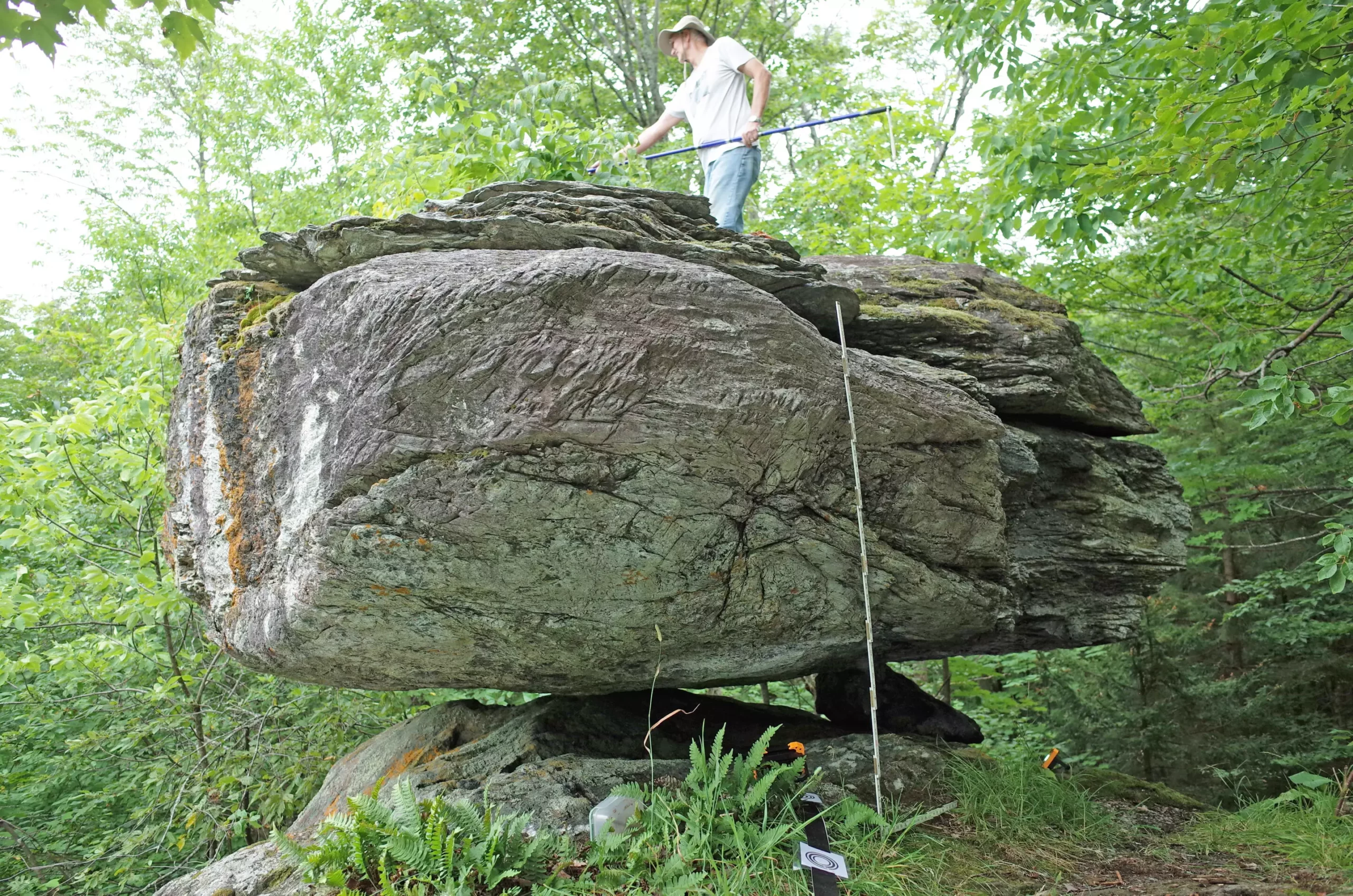In the earthquake-prone areas of northern New York and Vermont, a curious geological phenomenon is providing seismologists with critical insights into seismic hazards. Five boulders, known as precariously balanced rocks (PBRs), cling to narrow pedestals, remnants of an ancient glacial past. These geological oddities serve as indicators of the maximum shaking intensity an area may endure during an earthquake. By examining the inherent fragility of these PBRs, scientists can infer not only the likelihood of seismic events but also the historical records of shaking intensity in this captivating landscape.
The investigation into PBRs sheds light on a range of geological factors associated with seismic activity. The primary goal is to discern the gravity-defying balance these rocks possess and the specific level of shaking required to displace them. Seismologists utilize intricate models to assess risk thresholds related to earthquakes in the region, revealing a layer of complexity previously undocumented in this part of the eastern United States. The recent findings observed through rigorous study align well with predictions made by the U.S. Geological Survey’s 2023 National Seismic Hazard Model, indicating that these PBRs can withstand a moderate intensity of shakes consistent with the area’s seismic history.
Interestingly, one particular PBR located on Blue Ridge Road suggests that the area may exhibit a lower median hazard than originally anticipated. The continued presence of this boulder implies the potential absence of significant earthquake sources, particularly those labeled with a magnitude of 7.0, across substantial regions of the Adirondack Mountains and along the southern shores of Lake Champlain. The researchers, Devin McPhillips and Thomas Pratt from the U.S. Geological Survey, highlight that their findings allow for the occurrence of moderate earthquakes, between magnitudes 6.5 and 7.0, specifically within the unsteady environments of the northern Adirondacks and the Lake Champlain valley.
The innovative aspect of their research includes creating detailed maps that specify the minimum distance from known earthquake sources where these PBRs remain stable. This cartographical representation aids in identifying active fault lines capable of generating significant seismic events within the region. While techniques have been employed in other geological features, such as liquefaction in areas like the New Madrid seismic zone, the utilization of PBRs marks a notable progression in understanding regional seismic hazards.
Historically, seismic studies centered around precariously balanced rocks have predominantly occurred in regions such as New Zealand, Australia, and the western United States, which are notorious for their earthquake risks. McPhillips articulates that the development of this research field remains in its infancy stage. The emphasis has been primarily on areas with high risk, largely overlooking the eastern U.S. As many northeastern landscapes arose from different geological processes than those where PBRs are commonly found, the challenge persists in identifying suitable study sites.
The PBRs investigated in New York and Vermont are actually glacial erratics, remnants of the last glacial epoch that retreated approximately 15,000 to 13,000 years ago. Despite the abundance of forest cover complicating the search for these fragile rocks, local knowledge played a pivotal role in identifying suitable sites. McPhillips credits several regional experts and hobbyist publications that highlighted interesting rock formations, which aided significantly in their research efforts.
The research team utilized advanced methodologies, including ground-based lidar technology and field observations, to quantify the fragile nature of the PBRs. By establishing defined contact points and analyzing a set of parameters such as peak ground acceleration, they calculated the probability of these boulders toppling during seismic activity. This newfound data contributes to forming a more nuanced understanding of the seismic hazards in northern New York and northwestern Vermont, regions historically known for their elevated seismic activity, highlighted by past seismic events such as the magnitude 5.7 earthquake in Massena, New York.
With promising results aligning with the established seismic hazard models, McPhillips expresses optimism in expanding their research further. The identification of additional PBRs could yield even greater insights into seismic risks and strategies for hazard mitigation in the northeastern United States, an area often overshadowed in seismic discussions. The scientific community stands on the threshold of unlocking further mysteries surrounding these precarious celestial guardians, whose very existence serves as both a reminder of the Earth’s tumultuous history and a warning of the vibrations that lie beneath us.

